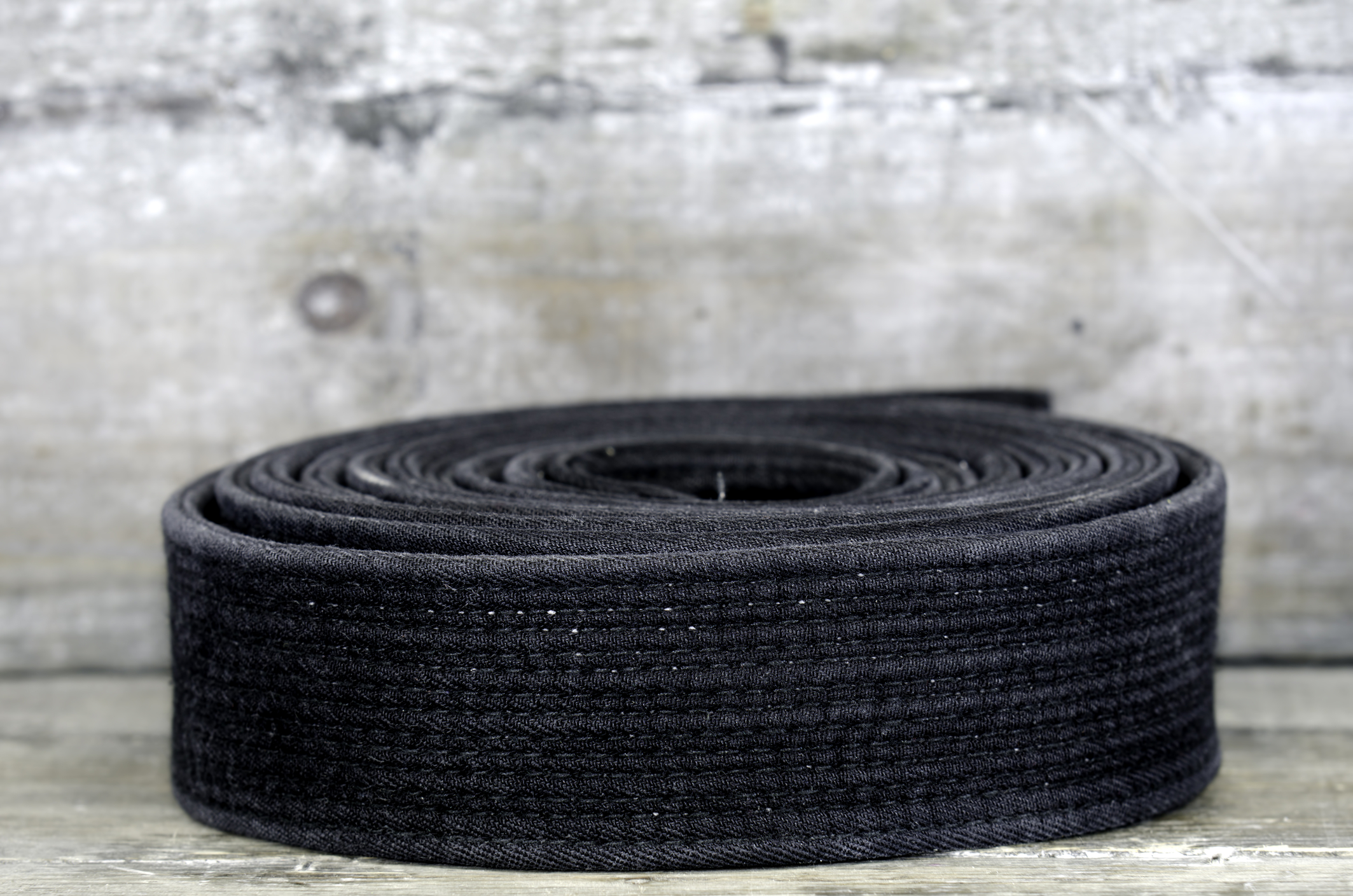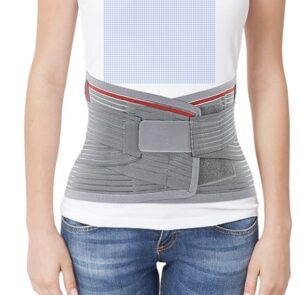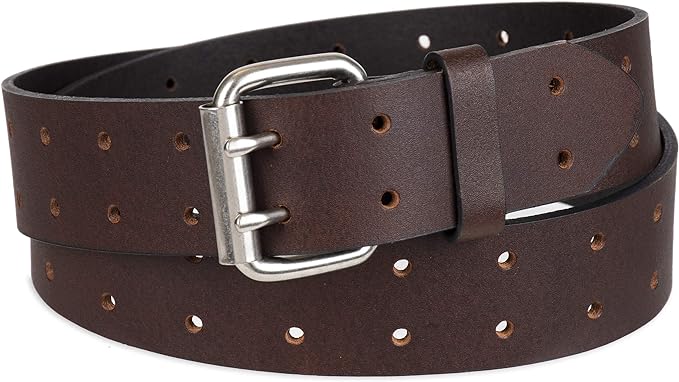K.P. Buteyko, MD-PhD, recommended a belt to enhance and maintain awareness of hyperventilation habits and as a passive technique to reduce air consumption.
The belt slightly impedes the movement of the diaphragm, making it work less, and brings a new focus to the diaphragm to gently encourage diaphragmatic breathing (belly breathing) over chest breathing, a habit that needs to be left behind.
Buteyko Breathing Belts: what to choose, where to get, and how to use it
The Buteyko belt is the perfect tool to create superior breathing awareness and quell the habit of over-breathing. Its primary goal is to increase CO2 concentration in the lungs (our vital energy) by reducing air consumption.
The first thing to understand is that there is no such thing as a specialized Buteyko belt (except this one – more about it later). Even though some Buteyko teachers attach the word “Buteyko” to the belts they sell, no one has created a belt that will work for everyone. This leaves you with an option to find your own belt that will become your Buteyko belt because it will effectively make you aware of your breathing patterns and will gently push you to breathe less. How to accomplish this goal?
Belts come in many varieties, sizes and materials and therefore finding the right one can be a haphazard process and take a few tries. This article intends to shorten your journey to picking the perfect belt for you (it does not need to be labeled “Buteyko”).
Benefits of wearing a Buteyko belt
The Buteyko belt is used for breathing awareness and restriction — but the indirect and cumulative results can be much more far-reaching.
The purpose of the belt is to serve as a reminder and a personal trainer of sorts. It can be used a few times a day for 15-to-20-minute sessions, or as it becomes familiar and comfortable, for many hours a day and throughout the night.
The belt is typically worn under the ribs or on the lower ribs, helping raise awareness of the movements of the diaphragm and also controlling its movements, which, if approached correctly, allows softening of the breath.
If chest breathing is present, restricting the diaphragm can be negative for health because it can encourage chest breathing, which is unhealthy. In this case, instead of wearing the belt on the abdominal area, a person should start by wearing it on the chest and by doing so, redirecting breathing from the chest to the abdomen. The belt on the chest also helps people to become more aware of their chest breathing or, sometimes, even notice it for the first time. With a belt secure around the diaphragm or chest, it is possible to notice subtle changes in breathing—in fact, it is nearly impossible to be unaware of breathing patterns!
Unlike a regular belt, a Buteyko belt is typically worn under the clothing; however, this is only necessary to hide the belt. If you don’t care about your look, you can wear it on a shirt or dress. If you wear a belt under your clothing, you need to make sure that the belt is made from a natural material; wearing a synthetic belt directly on the skin can be detrimental to health and works against the principles of Dr. Buteyko’s work.
Wearing a belt during the day enhances breathing not only because it encourages gentler breathing but also because it helps to improve overall posture. It forces a person to sit or stand up straight, which makes breathing easier and reduces air consumption. If the belt is too soft, it will not act as a posture corrector.
The Buteyko belt is known to save energy. People who hike wearing a belt are able to do it longer compared to when they do the same without wearing a belt.
Using a Buteyko belt while sleeping, helps to establish quieter, softer breathing while we are not aware of our breathing at all. In addition, by using a belt at night, with a small knot or ball embedded in he back, it’s possible to become more aware of poor sleeping positions, such as the corpse pose, and make adjustments to side sleeping. As a passive method to breathe less, a Buteyko belt is an essential tool to stop loud snoring and sleep apnea.
Wearing a Buteyko belt takes getting used to, but the health benefits are significant with this breath training tool—with a minimal investment in time, money, and practice.
Getting started and sticking with it
When actively engaged in breathing exercises, anyone with a history of hyperventilation can soften the breath with practice. During the rest of the hours of the day and night, however, it’s easy to fall back into over-breathing patterns. For most people, a lifetime of poor breathing is a persistent and ingrained habit.
Inattention to breathing is normal. After all, we are constructed to breathe without thinking. And this is the exact reason why most people who wish to improve their breathing need a belt. The belt acts as a gentle reminder to pay a bit more attention and correct subtle and not-so-subtle periods of hyperventilation.
By using the belt consistently, even in short sessions several times a day, rather than continuously, breathing will gradually become calmer. This gentle nudge works for almost everyone, but the belt is also an aide for people who have limits to how often or where they can practice breathing exercises, since it can be used while driving, watching television, and working.
What belts can be used as Buteyko belts?
As with all the other elements of Buteyko training, Dr. Buteyko used the belt himself, especially in the latter half of his life. His belt was custom-made to fit his torso, was wide and made from pure leather.
5 attributes of an ideal Buteyko belt:
- It should be adjustable
- Should fit the abdominal area (wearing a belt on the chest is needed for beginners only)
- Should be relatively wide
- Made from a firm, natural material, preferably leather.
- Easy to hide under clothing.
A sash or scarf around the chest or midsection, just below the diaphragm, is the simplest way to create awareness of your breathing patterns. Scarfs and sashes are acceptable to start getting used to a belt, and can be good enough; often people start with a soft material then later move to a denser fabric and leather. After the initial training with a scarf, they become comfortable with the belt gently suppressing the movements of their diaphragms.
Most cloth varieties do the job of increasing breathing awareness, but they are not ideal for providing enough sustained restriction.
More expensive, specialized belts come with an adjustable strap, usually made from Velcro. The ability to adjust can create the right amount of restriction, but too soft or synthetic materials can be a problem.
Because athletic and medical belts promote back support and posture, such devices may be a better choice; however, they are often too wide and may be impractical for smaller people. Due to their size, they can also feel too restrictive.
What belts to avoid using as “Buteyko belts”
The purpose of resistance is to act as a reminder to breathe more softly, but if the belt isn’t comfortable, it can have the effect of creating tension, which leads to a CO2 loss. This is not acceptable. Belts that are unforgiving, too soft, difficult to adjust, too narrow or too wide can create problems. One example of a poor choice for a beginner is a leather weightlifter belt, which is wide and stiff and may feel too bulky and restrictive for a smaller individual.
Traditional leather belts, the type is used for holding pens, can be a better choice because the material is comfortable but sufficiently restrictive; however, those belts are often too narrow. Avoid using very narrow belts because they will not restrict your breathing well and could be hard on the body. On the other hand, belts that are too wide can be uncomfortably limiting movements.
Belts with buckles and loops sometimes don’t have enough range of adjustment to tighten and loosen, and the buckles themselves add weight.
5 attributes that can make a belt non-Buteyko
- The belt that feels uncomfortable.
- Too soft or too dense.
- Too narrow or too wide.
- Made from synthetic materials.
- Has buckles and loops.
From sashes to specialized belts: features, prices, and availability
Scarves:
A sash, scarf or cloth belt has the advantage of adjusting to any tightness level. Sashes and scarves can be found in many clothing stores, including thrift shops. The best fabric is a somewhat flexible cotton. A good example is a karate-style belt, which is made from thick cotton, although these belts are often too slim. Mexican belts are also usable.
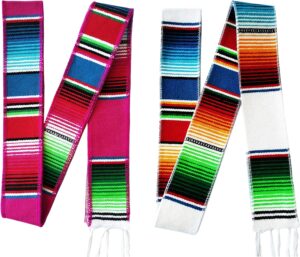
Most sashes and scarves can be knotted at the back for night use, creating an outcropping to discourage sleeping on the back. Cloth is one of the cheaper options, especially since many of us already have a sash or scarf sitting around the house; these are also easy to find at secondhand shops.
Downsides:
- Scarves and sashes take more effort to adjust and re-adjust
- The fabric is too forgiving for long term use
Medical, fitness, and work belts
Lumbar support belts support the lower back while lifting or doing nearly any activity, including walking. The style employs a single Velcro strap for easy adjustment. These are meant to be worn for hours at a time, so are quite comfortable over clothing. Support belts like this one and others of OPTONYX brand are adjustable and practical but can be too wide.
Weightlifters and laborers sometimes use specialized belts to ensure proper lifting form and help protect their backs from strain and injury. Work and fitness belts are adjustable and often washable. Here is an example of a high quality weightlifting leather belt that can be used as a Buteyko belt.
Cost of work, medical, and fitness belts runs from $15 to about $100 and they are easily found online in a range of styles and colors.
Downsides:
- Harder to find smaller sizes
- Often bulky
- Synthetic material shouldn’t be worn against the skin.
- Can be too wide.
Leather belts
Traditional men’s and women’s leather belts are an excellent choice for anyone who has become comfortable with wearing a Buteyko belt. They are made from a comfortable, natural material, and costs are reasonable; they are also extremely durable and adjustable.
Sasha Yakovleva, Advanced Buteyko Breathing Specialist, recommends this belt, which she has been using for many years. It also became the Buteyko belt for many of her clients.
At around $16, this belt has many notches and usually fits anyone. If this belt is too long, just cut the end of it to fit your torso. .
Downsides:
- Not always the best choice for a beginner
Buteyko Breathing belts for children
Some combinations of posture correctors and belts can improve a child’s respiration and CO2 levels. Of course, they work this way only if parents know how to use them following Dr. Buteyko’s approach. Below is one of the possible options for Buteyko belts for children.
Specialty (Buteyko) belts
Buteyko teachers have created specialized belts that attempt combine the best qualities.
Since Dr. Buteyko never patented a belt, the term “Buteyko belt” is open for use. The two belts below are marketed and sold for the express purpose of supporting Buteyko breathing.
- Gyula Varga-Szilágyi, a Buteyko teacher of many years and electrical engineer, invented the Buteyko Smart Belt; it employs a built-in metal buckle that sends a vibration when over-breathing. This belt is perfect for people who have difficulties noticing when they are hyperventilating. It adjusts easily and its material (canvas) is comfortable, but this belt is quite expensive at $219.00. Besides the belt, the kit comes with mouth tape, suspenders and ear plugs.
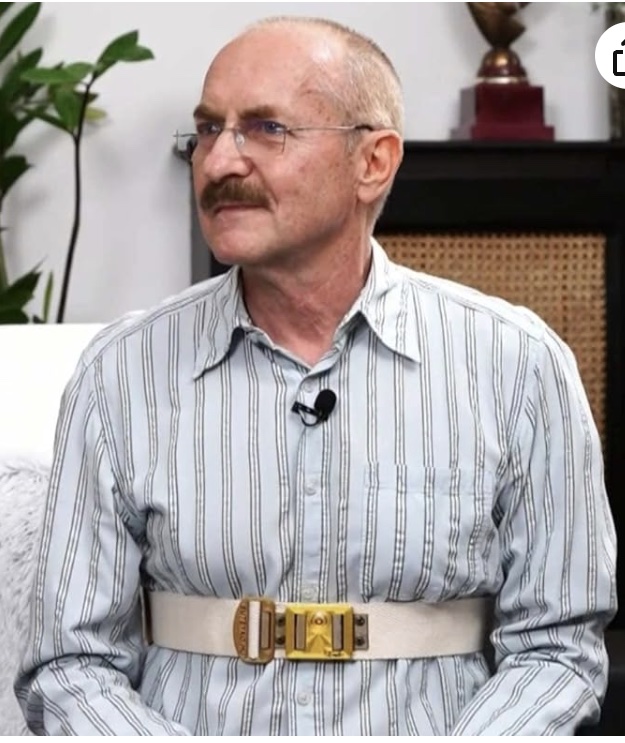
The “smart” belt can be worn at chest height for chest breathers, and its gentle buzz also acts as a reminder for better posture while sitting. This belt requires some “calibrating” to make sure it is the right tightness for your baseline (normal) breathing pattern. As you progress, the calibration will change to support a lighter breathing pattern.
This belt is not appropriate for sleeping, because it would cause the wearer to wake up.
Downsides:
- High cost
- Not for use at night2.
2. Another specialty belt was developed by an Irish Buteyko teacher and author of several books about the Buteyko method. His company has reproduced an orthopedic belt with adjustable straps that is similar in style to Velcro orthopedic support belts, this one is an example. The cost is a reasonable $25 plus shipping and may be a good choice for those who can’t find a medical/back support belt that is slim enough. The website offers a sizing chart (small, medium, large) to determine the best fit for you. The belt is sold under the name “Buteyko Breathing Belt” and can be helpful to the beginners.
Downsides:
- Fabric is too soft. Not always the best choice for intermediate or advanced Buteyko practitioners
- The material is synthetic so shouldn’t be worn against the skin
- Can be too wide for some people
The profound advantage of a calming breath
The Buteyko Breathing method promote a wide range of practices and exercises to reduce hyperventilation. Mouth taping at night and using a Buteyko belt are the simplest, lowest cost resources available. We suggest watching Buteyko Breathing Step-by-step video course to learn how to wear a Buteyko belt.
If used properly, the belt instantly creates better breath awareness and is easy to use once the new student grasps a core teaching of the Buteyko method: hyperventilation is a tough habit to break.
The best belt is the one you will wear, so investing a few dollars can be a way to commit to regularly using this tool, day and night. As your breathing improves, you might switch from a cotton scarf or a Velcro belt to a leather belt. Typing “light workout belt” on Internet shows endless varieties of belts to choose from. Many of them match the Buteyko standard: natural material, adjustable, and not narrow. Any belt that helps you to breathe less is the right Buteyko belt for YOU.

